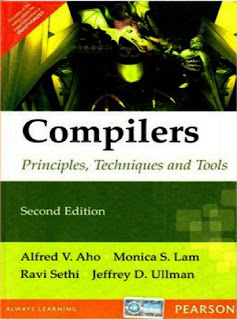

The book was published by Addison-Wesley, ISBN:2-9. The back cover offers the original inspiration of the cover design: The dragon is replaced by windmills, and the knight is Don Quixote.
#COMPILER DESIGN DRAGON BOOK CODE#
Lam, and the dragon became purple hence becoming the "purple dragon book." The book also contains the entire code for making a compiler. The second edition of Compilers: Principles, Techniques, and Tools added a fourth author, Monica S. The book may be called the "green dragon book" to distinguish it from its successor, Aho, Sethi & Ullman's Principles, Techniques, and Tools, which is the "red dragon book". It is often called the " green dragon book" and its cover depicts a knight and a dragon in battle the dragon is green, and labeled "Complexity of Compiler Design", while the knight wields a lance and a shield labeled " LALR parser generator" and "Syntax Directed Translation" respectively, and rides a horse labeled "Data Flow Analysis". Both of the authors won the 2020 Turing award for their work on compilers. To learn the basics an old book does not matter, because foundations should remain the same, but I want to read those foundations in an elegant manner, without being puzzled by unclear or in-depth explanation of the same.Principles of Compiler Design, by Alfred Aho and Jeffrey Ullman, is a classic textbook on compilers for computer programming languages. Now my question is which among the two books are better or are they equivalent? I had difficulty in following the second edition of the automata book so I felt like asking it here, such that before I begin, I am guided properly. Many important portions have been removed and at portions it lacks clarity. In this answer here they say that the automata book by Ullman in the newer editions have changed the elegance of the actual text. Now I am asking specifically which one among the two books which are referred by me are more easy to read? Which has a more lucid language.

Here the question asks whether "the two volume books are more advanced or complete than the dragon book.Is the dragon book supposed to replace the two-volume books? Are the two-volume books outdated or still very relevant?" The book which is being referred to as "two volume book" is different from the book marked as (1) in my question. So it is always better to have a good guidance before diving into a subject learning. I wanted to ask this question because in this answer it is said that older editions of few texts are sometimes better. Which book has a more lucid language? Which one is more preferable for a student performing self-study. I would like to know which one would be more suitable for a novice student having knowledge of only automata theory. Is it so that this particular edition inspite of being old is in great demand.Ģ) Compilers: Principles, Techniques and Tools (2nd edition) by Aho, Ullman, Sethi (2006) I find that the used copies of these text is still available online. Now for a student who is trying to master the subject of "Compiler Design" which book should he/she follow (written by Aho, Ullman)?ġ) Principles of Compiler Design By Aho Ullman (1977)


 0 kommentar(er)
0 kommentar(er)
